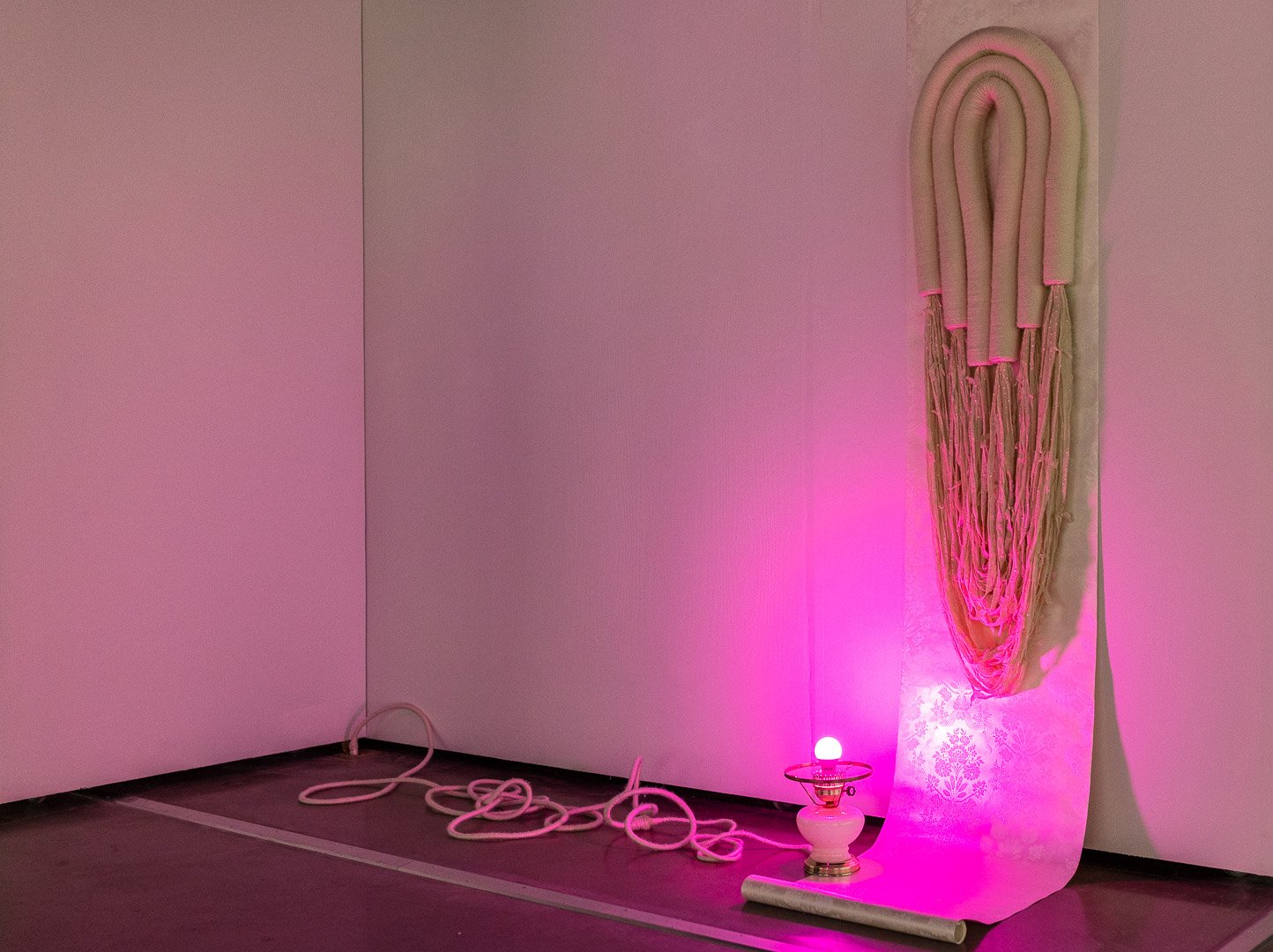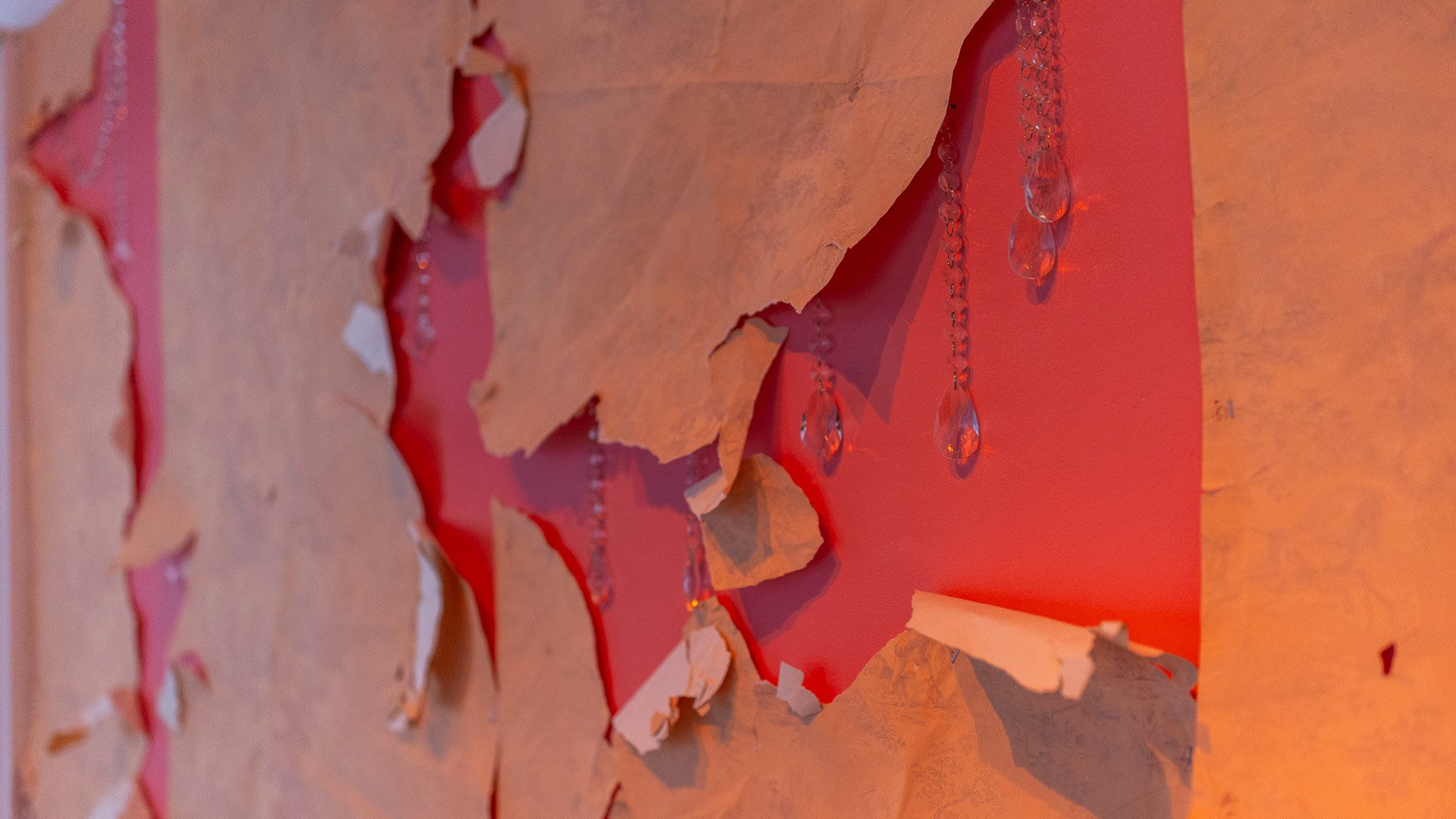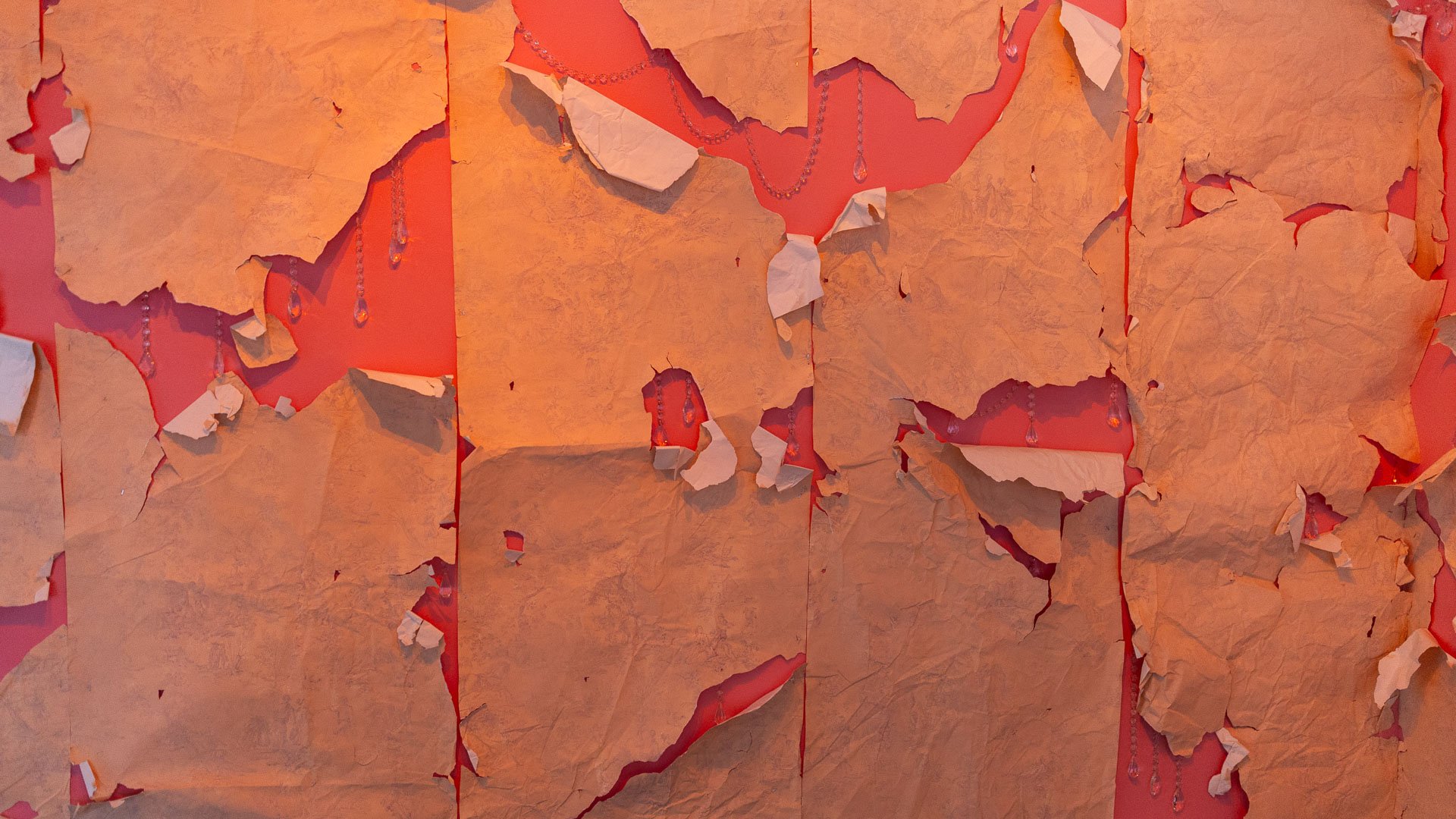A Psychological History of Femininity: A Conversation with Tenee’ Hart, Winner of the 2024 Carlos Malamud Prize
Tenee’ Hart, Winner of PATHWAYS 2024: The Carlos Malamud Prize. Image courtesy of the artist.
Unconventional fiber sculpture artist Tenee’ Hart (b. 1988, Virginia) makes artworks that tackle subjects in beauty, anatomy, and injustice towards women. Hart earned her Bachelor of Arts degree from the University of Mary Washington in 2011. She is currently teaching at Florida State University in Tallahassee, where she earned her Master of Fine Arts in 2015. Beyond her role as an educator, Hart is the sole Graduate Advisor and Coordinator for the Department of Art at FSU. In a conversation with Rollins Museum of Art curator Dr. Gisela Carbonell, Hart’s role as artist and historian emerged. Her award-winning fabric sculptures delve into specific beauty practices throughout history and the world. As seen in works such as Uguisu, referring to the geisha’s beauty regimen which includes the use of Nightingale bird feces in a facial paste that acts as a make-up remover and skin whitener. Her celebrated works can be considered a psychological history of femininity.
Uguisu and more of Hart’s works can be seen in the exhibition PATHWAYS 2024: The Carlos Malamud Prize, which is a collaborative effort between the Rollins Museum of Art curated by Gisela Carbonell, and the University of Central Florida Art Gallery curated by Shannon Lindsey. The prize started in 2022 through a grant from Miami-based historian Carlos Malamud. It aims to nurture emerging artists and create pathways towards their success. The exhibit also features artworks from finalists Diego Alejandro Waisman, Samuel Aye-Gboyin, Fernando Ramos, Clio Yang, and Patricia L. Cooke. Hart was announced as this year’s winner of the Malamud Prize on May 30, 2024, at the opening reception of PATHWAYS at the UCF Art Gallery. She will receive a cash prize of $ 10,000, a consultation with a financial advisor to discuss the budgetary aspects of a sustainable art practice, her first solo show at the UCF Art Gallery in the fall of 2025, and inclusion in the jury team in the next edition of the prize. PATHWAYS will be on view until September 1, 2024, at the Rollins Museum of Art, and August 30, 2024, at the University of Central Florida Art Gallery.





Exhibition: PATHWAYS at the Rollins Museum of Art. Featured work by Tenee’ Hart.
Zeny Recidoro-Fesh: What is your story? How did you become an artist?
Tenee’ Hart: I am deeply influenced by the women who raised and guided me throughout my life. My mother always fostered my creative spirit throughout my childhood—encouraging my love for drawing, crafting, and making. Our annual summer visits to Grandma’s house instilled a passion for sewing, fabric patterns, and textiles—a passion that I wouldn’t rediscover until graduate school.
How did I become an artist? Well, I will say that I don’t think anyone chooses to become an artist—you either are or you are not. If I had to try and pinpoint the start though, I would say that I fell into the world of art during my early college years while trying to fulfill elective requirements. I quickly became obsessed with the medium of painting, as most beginning artists tend to do, and saw myself as a surrealist ‘sculptural' painter. It wasn’t until I took my first actual sculpture class with [sculptor and video artist] Carole Garmon that I realized there was so much more to this idea of ‘art’. She completely changed my way of thinking and making—her encouragement throughout my undergraduate degree pushed me to pursue a career in the arts.
ZRF: Who are your favorite artists? Those you consider a great influence?
TH: Historically, Sheila Hicks, Claire Zeisler, and Eva Hesse have always been my art icons. Each of these women pushed the boundaries of their mediums, through their perseverance they instilled a sense of nonconformity within my practice, informing every fiber or material I use in my work. I think that inspiration is tucked in the unnoticed, layered sometimes in the obvious and that it takes an attentive eye to discover it. Through their practice, this is what Do Ho Suh, Tara Donovan, and Maria Nepomuceno taught me and continue to teach me to this day.
ZRF: What is your art process?
TH: When considering my practice, I see myself as an 'unconventional' fiber artist - as I am not a purist to the fiber medium. Throughout my practice, I pursue themes of feminism that delve into topics of beauty, anatomy, and the inequality of women. I embed personal narratives through material context and nostalgic visual languages. My wrapped, knotted, and house-paint-splattered sculptures resemble abject mutations of female anatomical forms. Subverting the spectacle of decoration, I push the seductively beautiful towards the overwhelming artificial. Combining, re-contextualizing, and reconfiguring disparate materials is my way of reconciling my role as a woman and challenging the societal expectations ingrained in us all.
ZRF: What is your perspective on art making?
TH: Within my process of making, I can see how it is similar to most craft-based processes such as knitting, weaving, and sewing—meaning that it is process-based. I am aware that I am influenced by artistic traditions such as craft, labor, and the act of making. I embrace these practices that are considered ‘the domestic’ or ‘women’s work’ as a form of empowerment and resistance to this long-held perception. There is evident interest in domestic materials, material culture, and what these tactile objects are capable of symbolizing. When considering their inherent properties and limitations, I liberate these household trappings’ intended use in favor of its aesthetic capacities. Through delicate and sometimes aggressive material manipulation, I aim to challenge the traditional connotation of such ‘everyday’ materials.
Within my studio, I make a number of small material studies, which will eventually turn into more realized forms. Surrounding myself with these tangible experimentations helps me better respond to the unrealized symbolic implications that such inquiries may offer. Research plays a key role in my beginning stages as well as throughout the creation of the work. Many of my material explorations are triggered by potential symbolic connections to my research topic. The overall objective in my practice is to explore new concepts, push the boundaries of fiber art, investigate a variety of materials and techniques, question the whys of the world—the unknown, and think and do, do and think until there is some kind of breakthrough.
ZRF: How did you react when you found out that you had won the 2024 Malamud Prize?
TH: To be honest, I didn’t realize that I had won when my name was called. I just smiled and clapped until it hit me... oh yeah that’s my name. There was a rush of overwhelming emotions that came over me as I walked up to the ‘spotlight’—the most prominent of which being disbelief and that this moment was actually real. In my mind being selected as a finalist for this prize was already a huge honor, but to be announced as the winner of this award, was beyond anything I could have dreamed of. I am incredibly grateful for this opportunity made possible by Carlos Malamud’s generous patronage, the collective support from both, the Rollins Museum of Art, the UCF Gallery, and ultimately, the Pathways 2024 judges who believed in me and my work.
ZRF: You work mainly with fabric in unconventional ways—are there other forms of art, or concepts, that you'd like to explore in the future?
TH: While I will continue to make my signature fiber sculpture installations, I am also interested in making smaller works that showcase my love for knitting, quilting, weaving, and other fiber traditions. When considering domestic and fiber-related techniques, I am drawn to nostalgic staples within my childhood memories. I am currently being pulled by the memories of blistering jellies, sun-bleached friendship bracelets, UV neons, and the constant poke of a broken scotch-taped tattoo choker. It is these nostalgic chokeholds that I want to explore further to see how they inform my next body of work.












Exhibition: PATHWAYS at the UCF Art Gallery. Featuring works by Tenee’ Hart and a portrait of curator Shannon Lindsey. Images: Laura Serdiuk, Women in the Arts, Inc.
Published July 24, 2024


